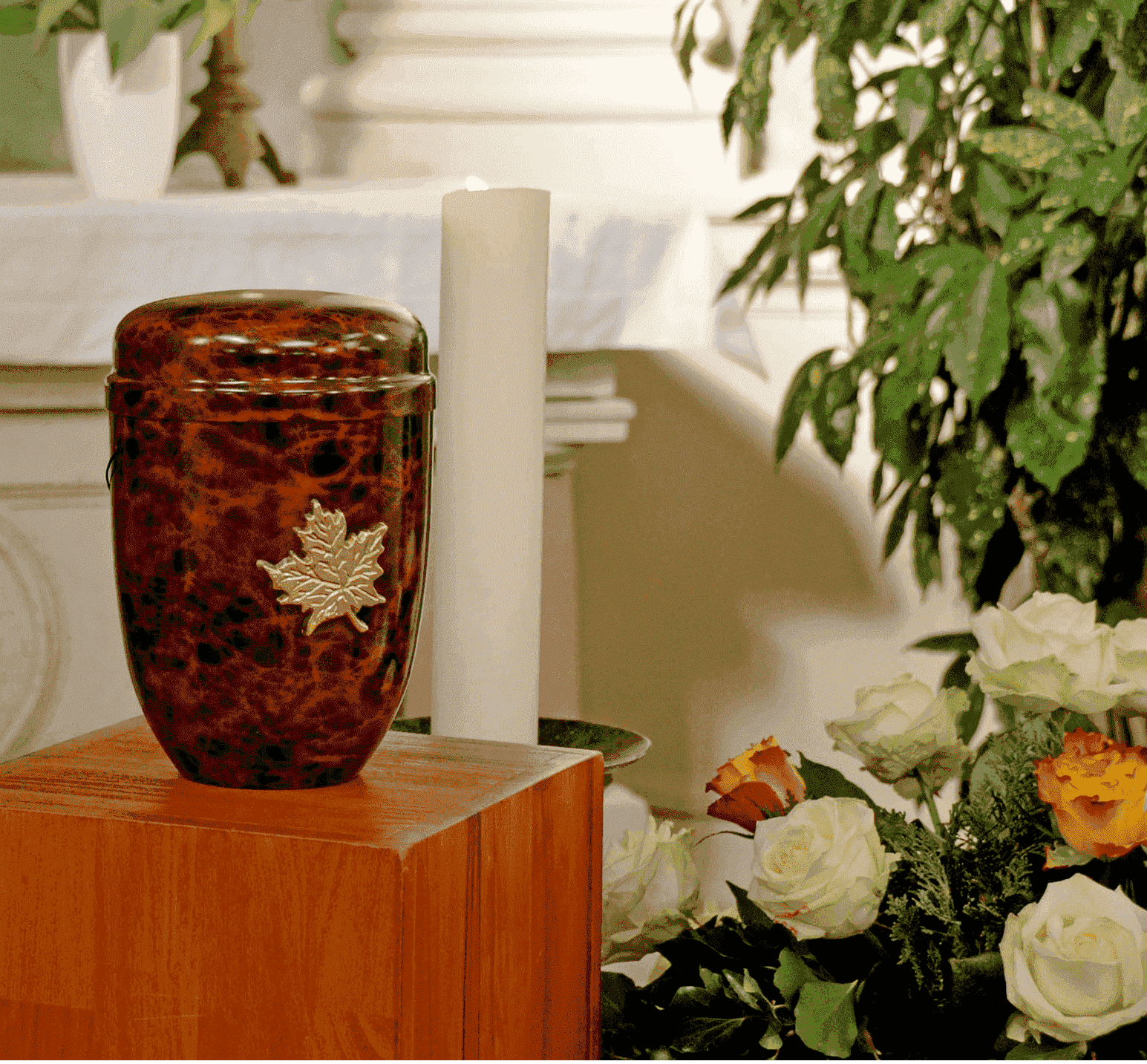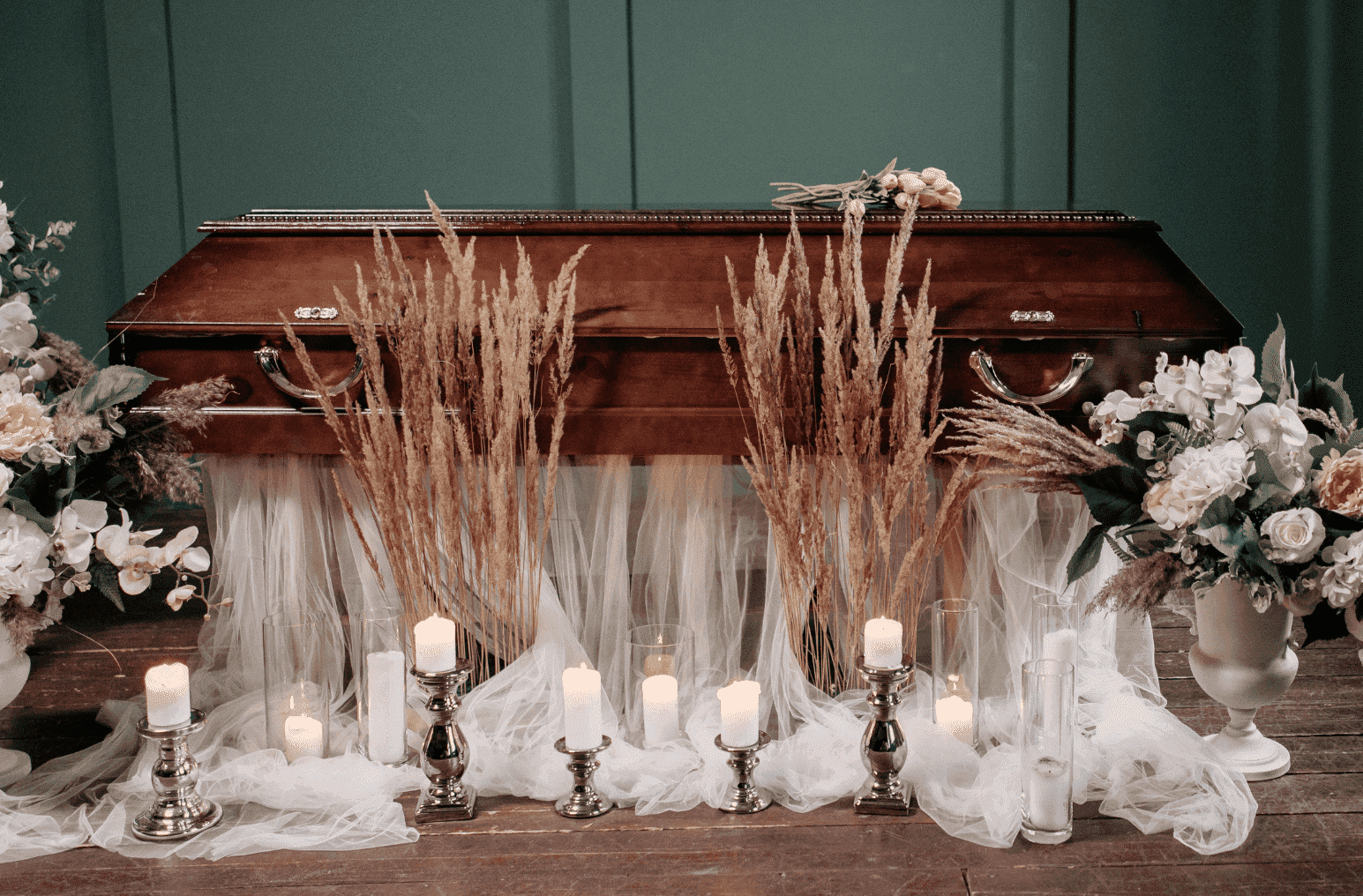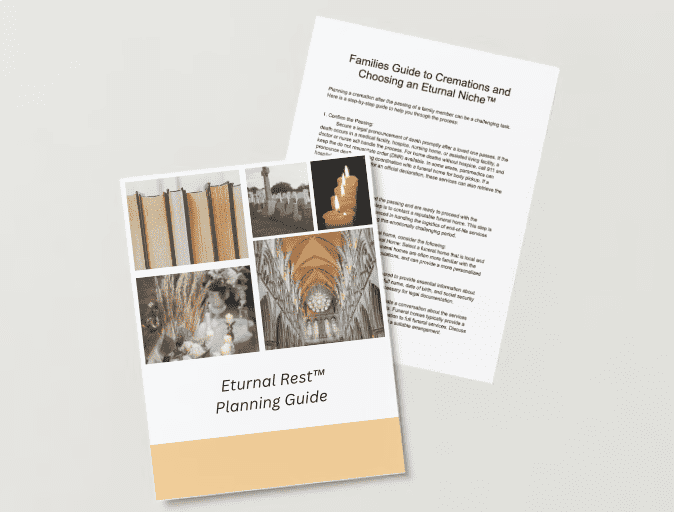Cremation
Cremation is a thoughtful and respectful process that involves using intense heat to gently transform the body into ashes and bone fragments. This dignified procedure is conducted in a crematorium, where the deceased is placed in a specialized chamber. After the cremation, the remains, often referred to as cremated remains or ashes, are carefully collected and placed in an urn. Families can choose to keep the urn, scatter the ashes in a meaningful location, or pursue other personalized memorialization options. Cremation is chosen for various reasons, including cultural preferences, environmental considerations, and flexibility in honoring the deceased.

Cremation Process
Laws governing cremation differ based on location, subject to state, provincial, or national regulations. Familiarize yourself with these laws to prevent conflicts. The following details may assist you in understanding the necessary steps according to the regulations in your local jurisdiction.
- Authorization: Obtain legal authorization from the next of kin or the person designated for decision-making.
- Documentation: Complete necessary paperwork, including permits and death certificates.
- Identification: Ensure proper identification of the deceased, often through tags or other means.
- Removal: Transfer the body to the crematorium from the place of death.
- Preparation: Place the body in a cremation container or casket.
- Cremation Chamber: Position the container in the cremation chamber or retort.
- Combustion: Subject the body to intense heat, typically between 1,400 to 1,800 degrees Fahrenheit (760 to 982 degrees Celsius).
- Duration: Cremation generally takes a few hours, depending on factors like body weight and crematory equipment.
- Transfer to Urn: Place the processed remains into an urn, which families can choose to personalize.
- Options for Disposition: Families can decide to keep the urn, bury it, scatter the ashes, or choose other memorialization options.
Cremation has become a widely accepted practice due to its flexibility, environmental considerations, and cost-effectiveness. The entire process is typically carried out with utmost care and in accordance with legal and ethical standards. Ultimately, the decision to choose cremation over burial is a personal one that should be based on individual beliefs, preferences, and practical considerations.
Pros
- Flexibility in Memorialization: Families have various options for memorialization, Reserving an Eturnal Niche™, keeping the ashes, scattering them in a meaningful location, or creating personalized keepsakes.
- Cost: Cremation can be more cost-effective than traditional burial, as it eliminates the need for a casket, burial plot, and related expenses.
- Environmental Impact: Cremation can be considered more environmentally friendly than traditional burial, especially if eco-friendly urns and scattering practices are chosen.
- Space Conservation: Cremation doesn’t require land for burial, addressing concerns related to limited cemetery space.
- Simplicity: The process is generally simpler and more straightforward than traditional burial ceremonies.
- Time Flexibility: Memorial services or ceremonies can be scheduled at a time convenient for the family.
Cons
- Emotional Aspect: Some individuals or cultures may find the idea of cremation emotionally challenging, as it involves the physical transformation of the body.
- Religious Beliefs: Certain religions may have specific preferences or restrictions regarding cremation.
- Lack of a Physical Grave: For those who find comfort in visiting a physical grave, cremation may not provide the same tangible connection.
- Misconceptions About Ashes: Some people may have misconceptions about the nature of cremated remains, leading to concerns or discomfort.
- Cultural Variations: Acceptance of cremation varies across cultures, and familial or cultural expectations may influence the decision.
Burial

Burial is a respectful and time-honored tradition where the departed is laid to rest in a chosen burial plot. This process involves placing the body in a casket and interring it in the earth, often within a cemetery or designated burial ground. The act of burial provides a physical place for loved ones to visit and pay respects, fostering a sense of connection and continuity. Families may choose various memorial markers, such as headstones or plaques, to personalize and commemorate the final resting place. This method of disposition is grounded in cultural, religious, and personal beliefs that honor the deceased with a sense of permanence and reverence.
Burial Process
Laws governing burial differ based on location, subject to state, provincial, or national regulations. Familiarize yourself with these laws to prevent conflicts. The following details may assist you in understanding the necessary steps according to the regulations in your local jurisdiction.
Before Burial:
- Authorization and Documentation: Obtain legal authorization for burial from the next of kin or the designated decision-maker. Complete necessary paperwork, including permits and death certificates.
- Casket Selection: Choose a casket or burial container based on personal, cultural, or religious preferences.
- Grave Selection: Select a burial plot within a cemetery or designated burial ground.
- Preparation of the Body: Prepare the body for burial, which may involve embalming or other preservation methods, depending on cultural or legal requirements.
During Burial
- Funeral Service: Conduct a funeral or memorial service before the burial, providing an opportunity for loved ones to say their final goodbyes.
- Procession to the Cemetery: Transport the deceased and mourners to the chosen cemetery.
- Committal Service: At the gravesite, perform a committal service where final prayers, readings, or rituals may take place.
- Lowering the Casket: Lower the casket into the grave with care and respect.
- Backfilling the Grave: Fill the grave with soil, returning the earth to its place.
- Memorialization: Install a headstone or marker at the grave to memorialize the departed.
After Burial:
- Grave Maintenance: Regularly maintain the gravesite, ensuring its cleanliness and upkeep.
- Grieving Process: Support the grieving process for family and friends, providing assistance and comfort as needed.
- Memorial Services: Consider holding additional memorial services or gatherings to commemorate the departed on anniversaries or special occasions.
- Legacy Preservation: Preserve the legacy of the departed through stories, photographs, and shared memories. This can be done through an Eturnal Tribute™
- Visitation: Invite loved ones to visit the gravesite as a way of maintaining a connection with the departed.
The burial process is a deeply emotional and culturally significant ritual that varies based on personal, religious, and regional practices. It serves as a way to honor and remember the life of the departed while providing a tangible place for remembrance. Just like cremation the decision to choose traditional body burial over cremation is a personal one that should be based on individual beliefs, preferences, and practical considerations.
Pros
- Tangible Memorialization: Burial provides a physical gravesite, allowing loved ones to visit, decorate, and find solace in a tangible connection.
- Cultural and Religious Significance: Many cultures and religions attach deep significance to burial as a respectful and sacred way to honor the deceased.
- Emotional Comfort: For some, the permanence and physicality of a gravesite offer emotional comfort and a sense of closure.
- Traditional and Time-Honored: Burial is a traditional and time-honored method of disposition, deeply rooted in many societies.
- Environmental Impact: Natural or green burials, without embalming or non-biodegradable materials, can be environmentally friendly.
- Regulatory Acceptance: Burial is widely accepted and regulated, ensuring adherence to legal and cultural norms.
Cons
- Cost: Traditional burial can be more expensive than alternatives, involving expenses like caskets, burial plots, and grave markers.
- Space Constraints: In densely populated areas, the availability of burial space may be limited, leading to increased costs or the use of alternative burial methods.
- Environmental Impact: Conventional burial practices, especially with embalming fluids and non-biodegradable materials, can have environmental consequences.
- Long-Term Maintenance: Gravesites require ongoing maintenance, which may pose challenges for families over the years.
- Emotional Impact: Some people may find the idea of decomposition or natural processes associated with burial emotionally challenging.
- Cultural or Religious Restrictions: Certain cultural or religious beliefs may have specific requirements or restrictions related to burial practices.
Cremation vs Burial
Comparing cremation and burial involves considering various aspects, and there are diverse approaches to both. It’s crucial to discover what aligns with your family’s preferences. Explore our guide below or delve into related topics for additional resources that may aid your decision-making process.
Families Guide to Cremations and Choosing an Eturnal Niche
Download our comprehensive and practical resource for families navigating the difficult process of cremation and memorialization. This downloadable guide provides step-by-step guidance on the entire cremation process, from selecting a reputable provider to choosing a final resting place for your loved one. With a special emphasis on columbarium niches, this guide also includes detailed information on the benefits of this type of memorialization and the cost considerations involved. Whether you’re pre-planning or dealing with the loss of a loved one, “Families Guide to Cremations and Choosing an Eternal Niche” is a valuable resource to help you make informed decisions and honor the memory of your loved ones in a meaningful way.
Related Topics:
